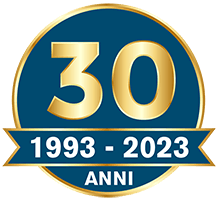Vertical bone augmentation with dental implant placement: efficacy and complications associated with 2 different techniques. A retrospective cohort study.
Abstract
PURPOSE:
To compare retrospectively the efficacy of and complications associated with 2 different techniques for vertical bone augmentation at implant placement: autogenous particulated bone grafts covered either by nonresorbable titanium-reinforced e-PTFE barriers or by resorbable collagen barriers supported by osteosynthesis plates.
MATERIALS AND METHODS:
Nineteen partially edentulous patients were consecutively treated: 11 patients had 18 implants treated for vertical bone augmentation with nonresorbable barriers, whereas 8 patients had 11 implants treated with resorbable barriers supported by osteosynthesis plates. Two independent assessors evaluated the amount of tissue regenerated and complications based on photographs and/or radiographs.
RESULTS:
No implants failed. In the group treated with nonresorbable barriers, complete bone regeneration was obtained for 12 of 18 implants. More than 50% of the planned regeneration was obtained for the remaining 6 implants. One patient had a dehiscence with suppuration that required an additional surgical intervention to remove the barrier. For resorbable barriers, complete regeneration was obtained for 10 of 11 implants. Dehiscences occurred in 2 patients. In 1 case no treatment was necessary. The other patient was treated with applications of chlorhexidine gel; more than 50% of the desired bone regeneration was obtained.
DISCUSSION AND CONCLUSIONS:
No statistically significant differences for the amount of regenerated tissue and complications were observed between the 2 techniques; however, the power of the study was too low to detect a difference, if any. Randomized clinical trials with a sufficient number of patients are needed to determine which could be the most effective technique for vertical ridge augmentation.
- PMID: 16955612 [PubMed – indexed for MEDLINE]

